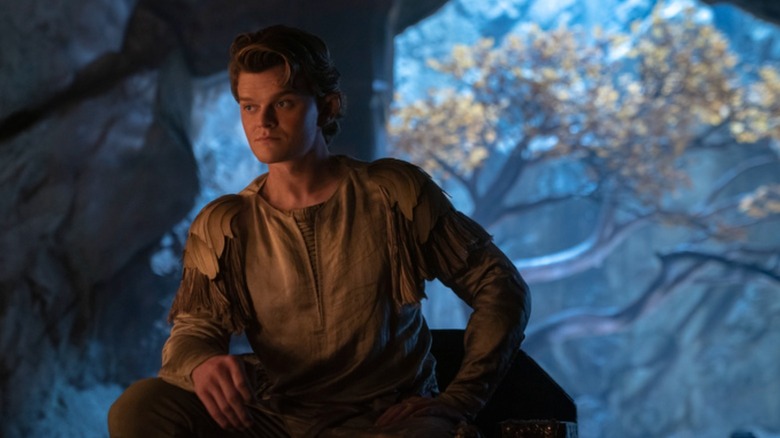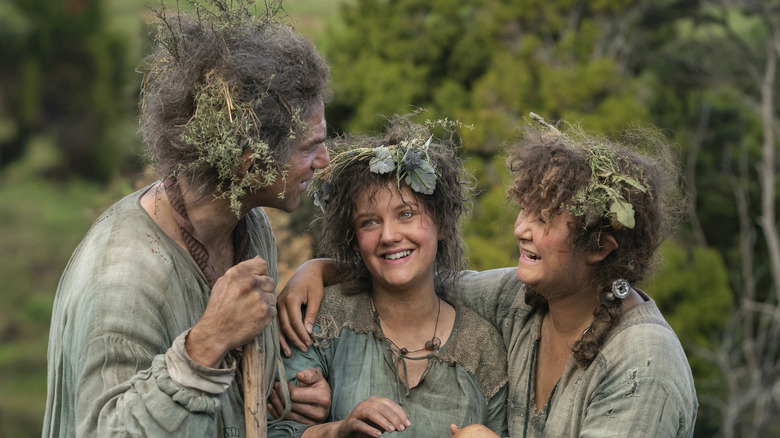How The Rings Of Power Composer Bear McCreary Emulated Howard Shore's Lord Of The Rings Score [Exclusive]
As much as the story, the battles, and the visuals of "Lord of the Rings" made it a pop culture powerhouse, a record-tying Oscar winner, a box office success, and a meme generator, Howard Shore's music grounded it all in a place of both magic and realism. He made Middle-earth sound like a real place and he made the Shire feel like the epitome of comfort and home.
Which is why having "The Rings of Power" be set thousands of years before the movie and not feature Shore's score (he does the main theme, but still) was as big an ask for the audience as making them see new actors play Galadriel or Elrond.
Yet composer Bear McCreary does the impossible, crafting a score that feels undoubtedly Middle-earth, a score that sounds like the forebearer of Shore's iconic sounds, while still being recognizably distinct.
"I think the thing I wanted to preserve was a sense of continuity," McCreary told /Film in an interview, adding:
"I wanted fans who love the Peter Jackson films, fans like myself, to listen to the music of Khazad-dum, the music of Lindon, the music of Sauron, and to nod their head and say, 'Yes, yes, that is correct. That is what I want that to sound like.' And that's not even a very specific element. It's a general mood, a general sense of connection that is built from an indescribable number of very specific little musical decisions, ingredients in the cake that are similar."
'I'm trying to create something continuous with what Howard Shore did'
One thing that made Shore's score for the "Lord of the Rings" special was his use of rare instruments with a long history, like the Norwegian Hardanger fiddle used for the Rohan motif. McCreary used the same technique, which he's implemented throughout his career, using instruments from cultural music around the world in everything from "Outlander" to "Battlestar Galactica."
"This is something I have been researching my entire career. And that research was incredibly helpful in doing [this show]," McCreary told us. McCreary used some of the same instruments Shore used to give the show a sense of continuity, like using the Hardanger fiddle, as well as the Swedish nyckelharpa to create the sound of the Southlands.
"In that way, I'm trying to create something continuous with what Howard Shore did. Howard had a Celtic influence to the Shire and to the hobbits that he really filtered through a British folk music lens." In the case of 'The Rings of Power,' McCreary is using "Uilleann pipes from Ireland, small Scottish bagpipes from Scotland, a Bodhran, which is a frame drum used in Irish music that has this vocal pitch bendy quality, and Irish penny whistles and tin whistles" to create the sound of the Harfoots, letting the audience know through sound that these halflings will eventually settle down and their sound will go from Celtic into a more British folk music color thousands of years from now in the Shire.
As McCreary describes it, his music is not the same as Shore's. "They are different, but they're continuous. And I loved the idea of being able to use those colors to tell that story."
"The Rings of Power" is streaming on Prime Video.

